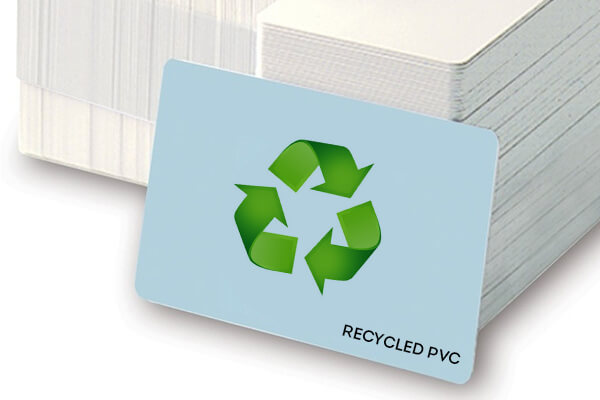PVC is the most poisonous plastic that is used to make several plastics. PVC is used largely in the hospitality industry to make key cards because it is inexpensive and readily available. It’s a good idea to be concerned where a single PVC could end up because those little pieces of plastic can add up to a big environmental impact even though it may not seem like much of a big deal. Companies recycle the PVC back into sheets of plastic and then sell it back to the printers to make the desired print.
The process of recycling PVC
PVC recycling consists of gathering and reconverting the material to new and useful plastic products. The process is divided into two methods advanced recycling and traditional or mechanical recycling.
Through advanced recycling, the effect of chemicals breaks down PVC material using three techniques namely gasification, pyrolysis, and chemical recycling. Many PVC products are thermoplastic materials therefore, traditional or mechanical method of recycling is used. This method involves melting plastics and processing them into new plastic products. Through a process called injection molding, the recyclers make the melted plastic into new products. The recycling process involves;
1)Collecting the PVC products
– Including pipes, wires, cards, and bottles. PVC waste can be collected from offices, public places, homes, and sites where people dispose of their plastics.
2) Sorting them into categories
-In this process, the products are separated and paired according to their size, use, color, and thickness. The recycling machines sort them based on the properties of the material.
3) The products are washed
-This process removes impurities such as dirt, paper labels, and gunk. The process also removes glue and additional chemicals that the products may contain. This process is essential because failure to remove impurities may damage the new product.
4) Shredding and resizing
-PVC products cannot be recycled in their already developed state, therefore, they are put into shredders to reduce the plastic into fragments. Resizing identifies elements like metal that weren’t discovered during washing.
5) Identification and separation
-This process tests the plastic and identifies the class and quality of the plastic. During this step, recyclers identify plastic qualities like melting point and color.
6) Compounding
-In this step, recyclers transform plastic particles into materials that manufacturers can reproduce. Through a process called extrusion, the plastic particles are smashed and melted to create pellets.
Why recycle PVC products?
Recycled PVC products are semi-finished or discarded and are diverted from waste to use within a new product.
- a) Using recycled PVC reduces landfill and emissions
- b) PVC is well suited to recycle due to its advanced mechanical recycling properties
- c) Using recycled PVC allows natural resource preservation and helps meet resource-efficiency targets.
- d) Large volumes of recyclable PVC waste are available.
Conclusion
Due to the heavy contamination of PVC products, many companies are reluctant on recycling them. The contaminants have made it nearly impossible to be removed from the plastic and could cause damage to the expensive machinery used. Based on that, many companies are now using alternatives to replace PVC to protect the environment. In this situation, eco-friendly products like BioPaper cards are becoming popular as a perfect replacement for plastic cards. Click here to learn more information.
